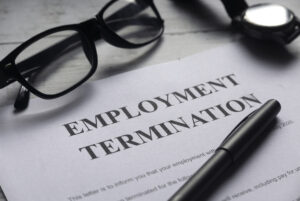Being terminated from your job can be a difficult experience, and when discrimination is involved, it can feel especially unjust. If you believe you’ve been wrongfully terminated based on discrimination, there are legal steps you can take to prove your case and seek justice. Here’s a guide on how to build a strong wrongful termination case with discrimination as the core issue.
Understanding Wrongful Termination and Discrimination
Wrongful termination occurs when an employee is fired for an illegal reason, such as discrimination based on race, gender, age, disability, religion, or other protected characteristics. Proving wrongful termination in a discrimination case requires demonstrating that the termination was not only unfair but also unlawful. This can be challenging, but with the right evidence and preparation, you can build a compelling case.
Steps to Prove Wrongful Termination in a Discrimination Case
Proving wrongful termination in a discrimination case involves gathering documentation, identifying patterns of discriminatory behavior, and following legal procedures to protect your rights.
1. Review Your Employment Documents
Start by reviewing any documents related to your employment and termination, as these can serve as critical evidence.
- Employment Contract: Check if there’s a clause that outlines grounds for termination. This can help establish whether your termination violated contract terms.
- Employee Handbook: Look for policies on discrimination, termination procedures, and steps for handling complaints. These can show whether your employer deviated from standard procedures.
- Termination Letter: If you received a letter detailing the reason for your termination, keep it for your records. The stated reason may be inconsistent with what you believe led to your firing.
Collecting these documents is essential for identifying contradictions and showing that the termination did not align with company policy.
2. Document Instances of Discrimination
If you suspect your termination was based on discrimination, documenting specific instances of discriminatory behavior is key.
- Identify Patterns: Record dates, times, and details of incidents where you felt targeted based on your race, age, gender, or other protected status.
- Witnesses: If coworkers witnessed discriminatory actions, note their names and, if possible, ask if they’d be willing to provide statements.
- Previous Complaints: If you filed any complaints with HR or your supervisor regarding discrimination, keep copies of these records. Showing a history of reporting discrimination strengthens your claim that the termination was retaliatory.
3. Gather Evidence of Positive Performance
In wrongful termination cases, employers may argue that the termination was due to performance rather than discrimination. To counter this, gather evidence of your positive performance.
- Performance Reviews: Keep copies of favorable performance reviews, as they demonstrate that your work was not the reason for your termination.
- Email Records: Look for emails where supervisors or colleagues complimented your work. Consistent positive feedback supports your argument that performance wasn’t an issue.
- Awards or Recognitions: If you’ve received awards, certificates, or recognitions, include these as evidence that you were a valuable employee.
4. Identify Discriminatory Patterns in Your Workplace
Discrimination cases often benefit from showing that the employer has a pattern of unfair treatment toward certain groups.
- Compare with Other Employees: If employees of a different race, gender, or age group received preferential treatment, this could indicate bias. Examples include promotions, pay raises, or discipline for similar infractions.
- Identify Disparate Impact: If the company’s policies or practices disproportionately affect individuals of your protected status, it may indicate systemic discrimination.
- Review Company History: If your employer has a history of discrimination claims, this could be relevant to your case.
Establishing a pattern can provide context and suggest that your termination may have been influenced by discriminatory motives.
5. Seek Legal Assistance for Your Case
A wrongful termination case involving discrimination is complex, and consulting with an employment attorney can help protect your rights and strengthen your case.
- Consultation: An attorney can assess your evidence, advise you on next steps, and determine the validity of your claim.
- Evidence Collection: Attorneys can help subpoena records, witness statements, and additional evidence that might otherwise be difficult to obtain.
- Representation: If your case goes to court, an attorney will represent you and advocate on your behalf.
If you believe your termination was due to discrimination, contact PLBH at (800) 435-7542 to discuss your situation and explore your options. Our experienced team is here to guide you through every step of the process, from building a case to seeking the justice you deserve.

